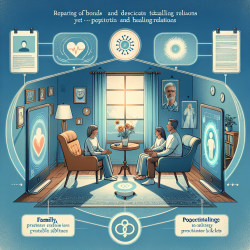The COVID-19 pandemic has accelerated the adoption of telehealth services, especially in mental health settings. A recent research article titled "Patient experience with telehealth service in a mental health setting" provides valuable insights into how telehealth can be optimized for better patient outcomes. Here, we will discuss the key findings and how practitioners can implement these outcomes to improve their telehealth services.
Key Findings
- High Usability: Participants rated the usability of telehealth services highly, with an average score of 5.82 out of 7. The ease of use and usefulness subscales received the highest marks.
- Device Preference: Smartphones were the most frequently used (63.3%) and preferred (57.1%) device for telehealth services.
- Increased Attendance: 61% of participants indicated they would attend more doctor's appointments if telehealth were available.
- Health Improvement: 47% of participants believed their health would improve with the availability of telehealth services.
Implementing Research Outcomes
Based on these findings, practitioners can take several steps to improve their telehealth services:
- Optimize for Smartphones: Given that smartphones are the most preferred device, ensure that your telehealth platform is fully optimized for mobile use. This includes user-friendly interfaces and functionalities like video conferencing and texting.
- Enhance Usability: Focus on making your telehealth services as easy to use as possible. Offer tutorials or guides to help patients navigate the platform, especially for those who may not be tech-savvy.
- Encourage Frequent Use: Promote the benefits of telehealth to encourage more frequent use. Highlight the convenience and flexibility it offers, which can lead to better health outcomes.
- Address Barriers: Be aware of potential barriers such as digital literacy and lack of high-speed internet. Offer support to help patients overcome these challenges.
Further Research
While this study provides valuable insights, it also highlights the need for further research. For example, more studies are needed to understand the telehealth experience across different demographics and clinical settings. Additionally, exploring ways to enhance human engagement in telehealth can make the service more appealing to patients who prefer in-person interactions.
To read the original research paper, please follow this link: Patient experience with telehealth service in a mental health setting.










